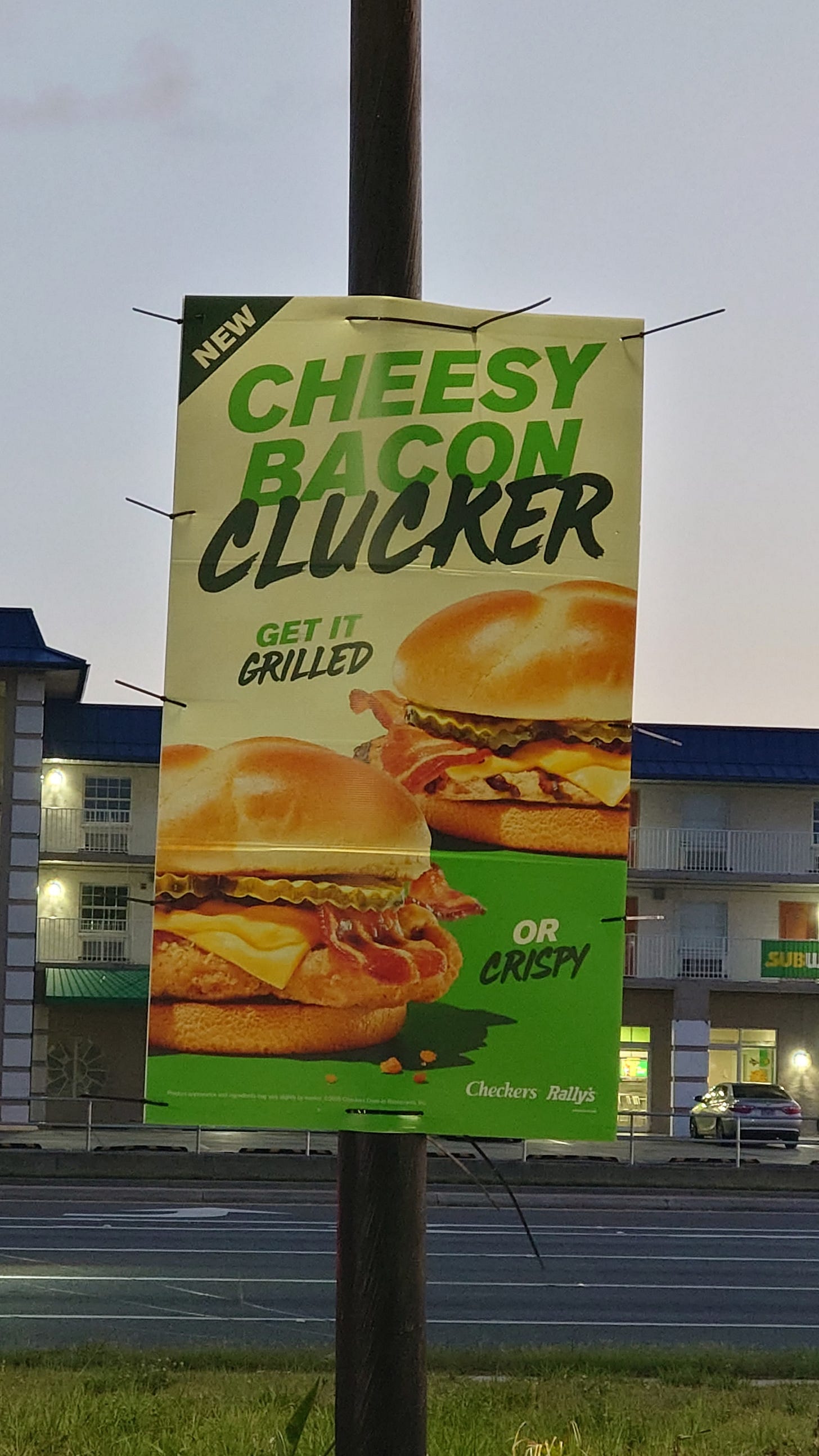Fast food signage, once merely promotional, increasingly occupies the space of ephemeral public installation: part consumer-era fresco, part semiotic punchline. In Checkers and Rally’s new Cheesy Bacon Clucker campaign, we are offered not just a sandwich but a saturated image-commodity whose affective registers echo the undercurrents of American visual culture. The signage, stapled to a roadside pole with the quiet assurance of a municipal mandate, carries the aura of what Allan Sekula once called “the traffic in photographs.” This time, it is filtered through sodium-yellow cheese and digital bacon glisten.
There is something unmistakably Dieter Roth in the composition, particularly in its embrace of decay as inevitable aesthetic consequence. Roth’s use of real cheese and chocolate in his books and installations was as much a comment on obsolescence as it was on consumption. Similarly, the Clucker image, though prepackaged for mass salivation, is already in visual rot. It is overprocessed and glossed into unreality. The “GRILLED / OR CRISPY” binary functions like a menu-based ready-made, directly aligned with Ben Vautier’s signage logic, where the options themselves become the absurdity.
The ad’s textual aggression, "CHEESY. BACON. CLUCKER.," evokes Sister Corita Kent’s typographic activism, though stripped of her spiritual optimism and replaced with corporate imperative. If Kent’s serigraphs transfigured the language of advertising into ecstatic politics, this sign does the opposite. It collapses desire into marketing syntax and delivers a kind of banal evangelism.
One might also recall Hans-Peter Feldmann’s democratic imagery and his obsessive documentation of mundane subjects. Here, the sandwich is photographed with surgical attention to gloss, grill marks, and bacon layering, becoming the subject of a cultic seriality. Were Feldmann American, perhaps he would have collected one hundred images of Cluckers from different regions, hung them edge to edge in an anonymous white cube, and let them speak their greasy truth.
There is also a latent violence in the whole construct, something that calls to mind Martha Rosler’s Semiotics of the Kitchen, where the lexicon of domesticity becomes weaponized. The Clucker is both food and threat. Its name hovers a whisper away from profanity, and its image dares you to resist. It is not simply eaten; it is deployed, a ready-made bomb of sodium and cultural bravado.
To call this campaign art is to stretch the term, though not beyond reason. Like Raymond Hains’ affiches lacérées, the ad resists fixed meaning and functions as urban palimpsest. It waits to be torn down, tagged over, or faded into oblivion. Until then, it looms as an edible monument to American surplus aesthetics.





